Green architecture – James Madison University’s Wayland Hall
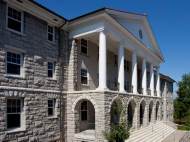 Here’s an architectural project which differs from the rest we wrote about thus far by the fact it is a renovation which aside raising aesthetics and functionality managed to incorporate many green building features. James Madison University’s Wayland Hall is the first completely renovated residence hall to achieve LEED Platinum certification under the USGBC’s New Construction and Major Renovation guidelines.
Here’s an architectural project which differs from the rest we wrote about thus far by the fact it is a renovation which aside raising aesthetics and functionality managed to incorporate many green building features. James Madison University’s Wayland Hall is the first completely renovated residence hall to achieve LEED Platinum certification under the USGBC’s New Construction and Major Renovation guidelines.
The renovation was planned by VMDO Architects, and it transformed the 3,809 square-meter (41,000 square-foot) residence hall into an innovative new living-learning community dedicated to the visual and performing arts. The renovated building includes a student-run art gallery, music practice rooms, an art studio, and a performance and exhibition room – all of which will allow students to pursue their passions for theater, dance, music, art and art history.
While the public front of Wayland Hall is preserved, site improvements along and behind the residence hall reduce impervious site cover, improve pedestrian connectivity, and provide new opportunities for extending residence life outdoors. Efforts to create a safe and comfortable indoor environment with usage of no or low-VOC materials and finishing protect the health of the residents.
Aside an ambitious re-configuration of the bedroom spaces, the re-designed floors encourage interaction and help students to get to know their neighbors and collaborate. Collaboration is further encouraged with a variety of flexible study spaces which allow students to learn as individuals or in small groups.
By collecting stormwater from the roof and transforming 23 parking spaces into a series of terraces, pathways, and native plantings, the amount of stormwater entering storm sewers is reduced by 30.7%. A bio-retention basin is installed to treat all on-site stormwater and remove 80% of the total suspended solids (TSS) and improve the quality of water returned to the local watershed.
37,850-litre (10,000-gallon) cistern stores rainwater and condensate recovery which is used for toilet-flushing. Potable water conservation is achieved with usage of dual-flush toilets and pint-flush urinals, low-flow fixtures and irrigation-free planting.
Savings in energy consumption are achieved through a ground source heating and cooling system, reduced lighting power densities and energy efficient lighting, reduced domestic hot water use, ground source system tied to domestic hot water, ventilation air energy recovery and variable speed pumping for the geothermal system.
Further savings are achieved by employing insulation such as 3.8cm to 5cm (1.5” to 2”) average insulation on the exterior wall, R-16 spray applied insulation on the roof deck, and Low-E glazing on the windows. All of the previously mentioned sustainable solutions contribute to an approximate 38% reduction in energy consumption and savings of over 4.9 million liters (1.3 million gallons) of water each year.

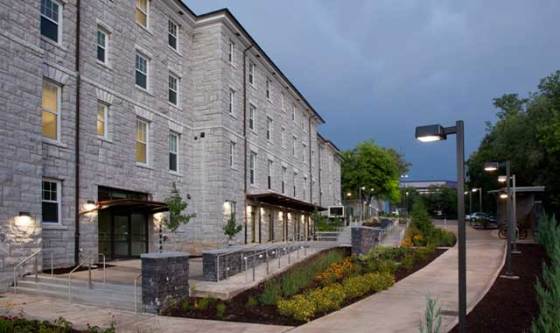
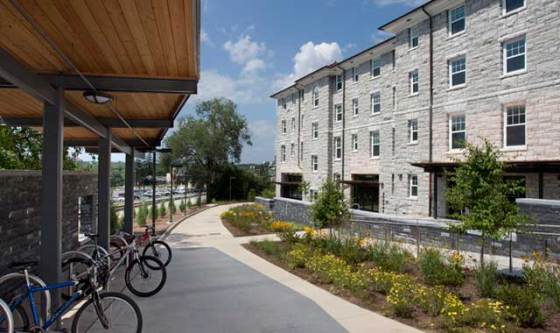
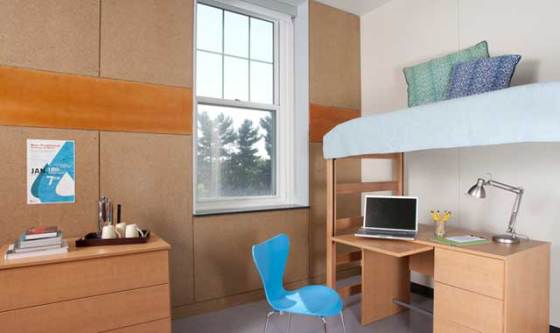
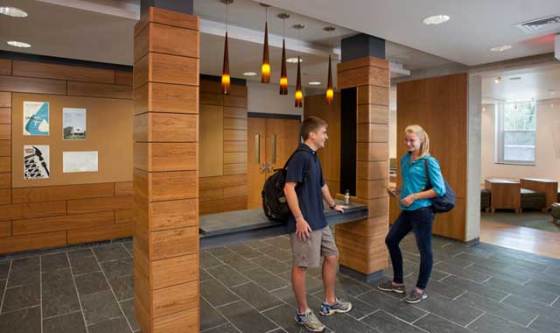
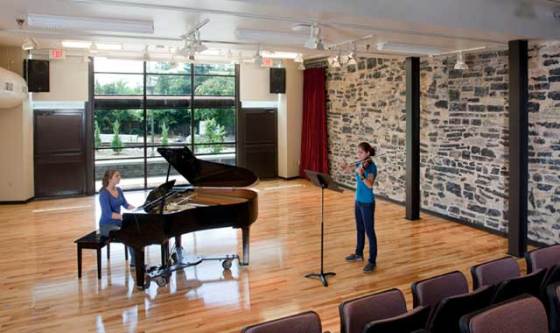








Very nice transformation!